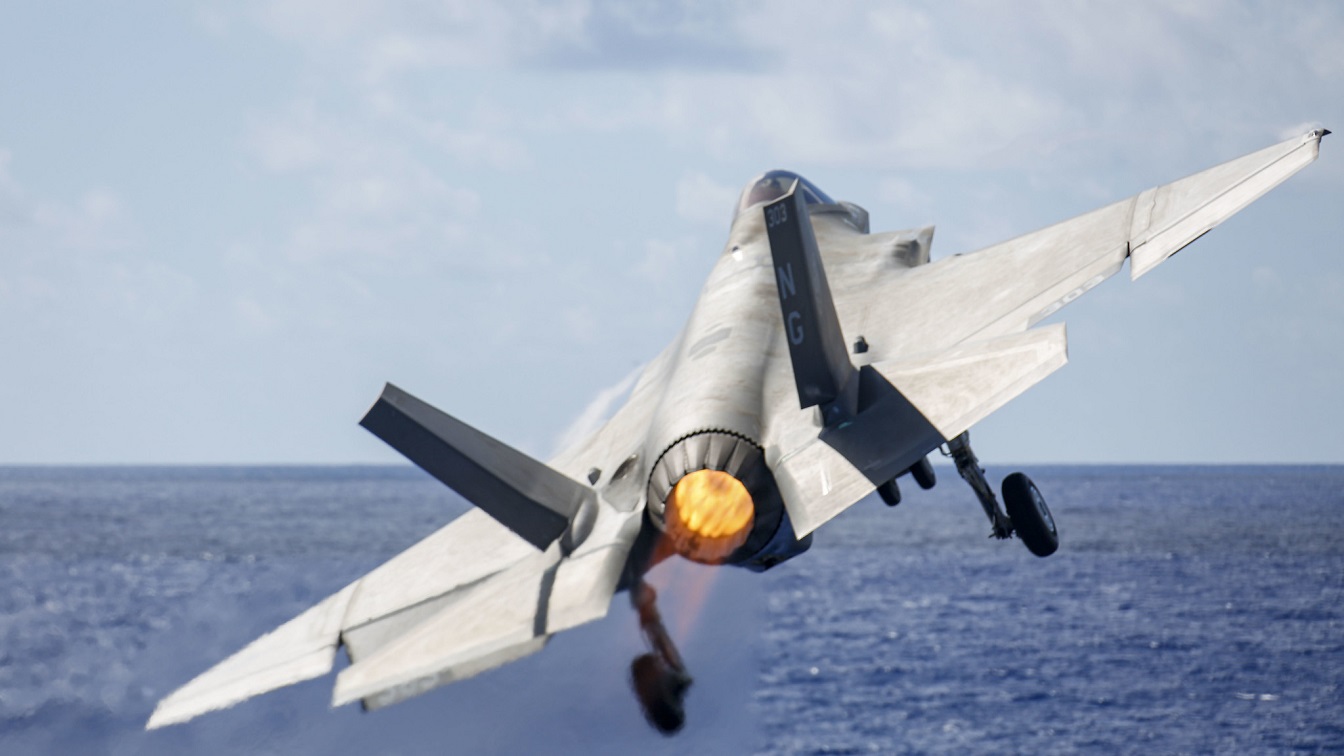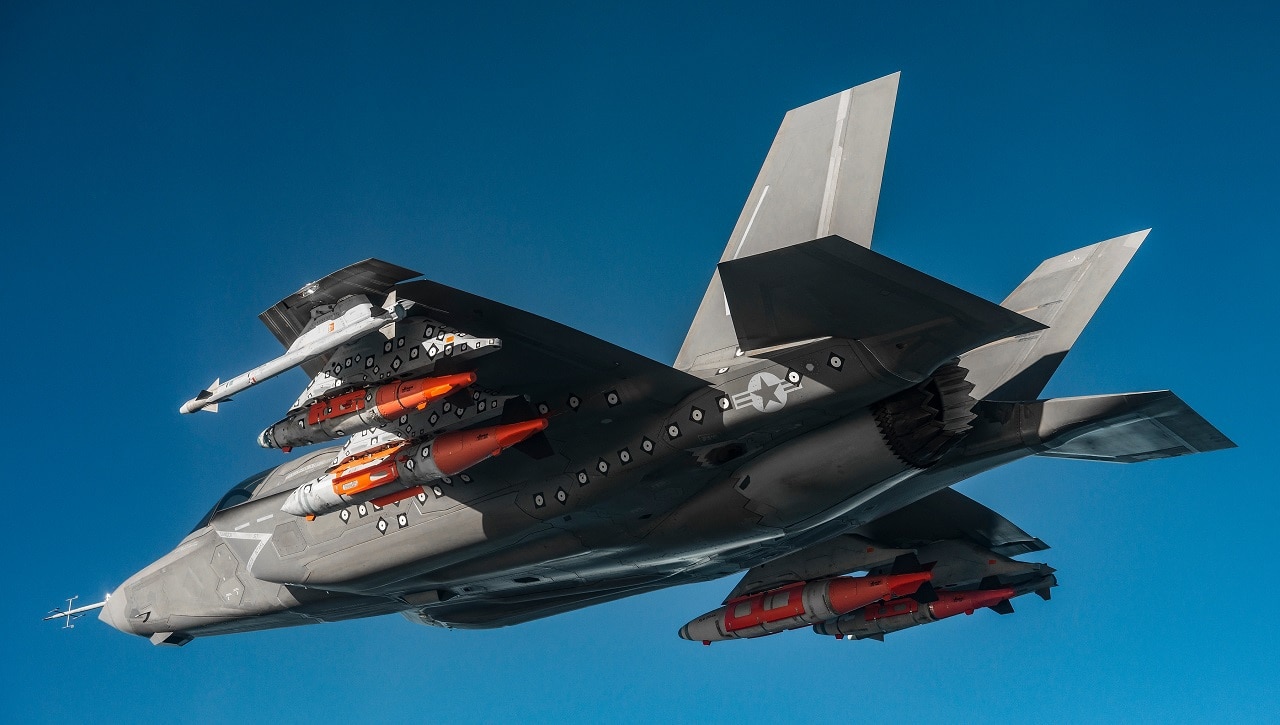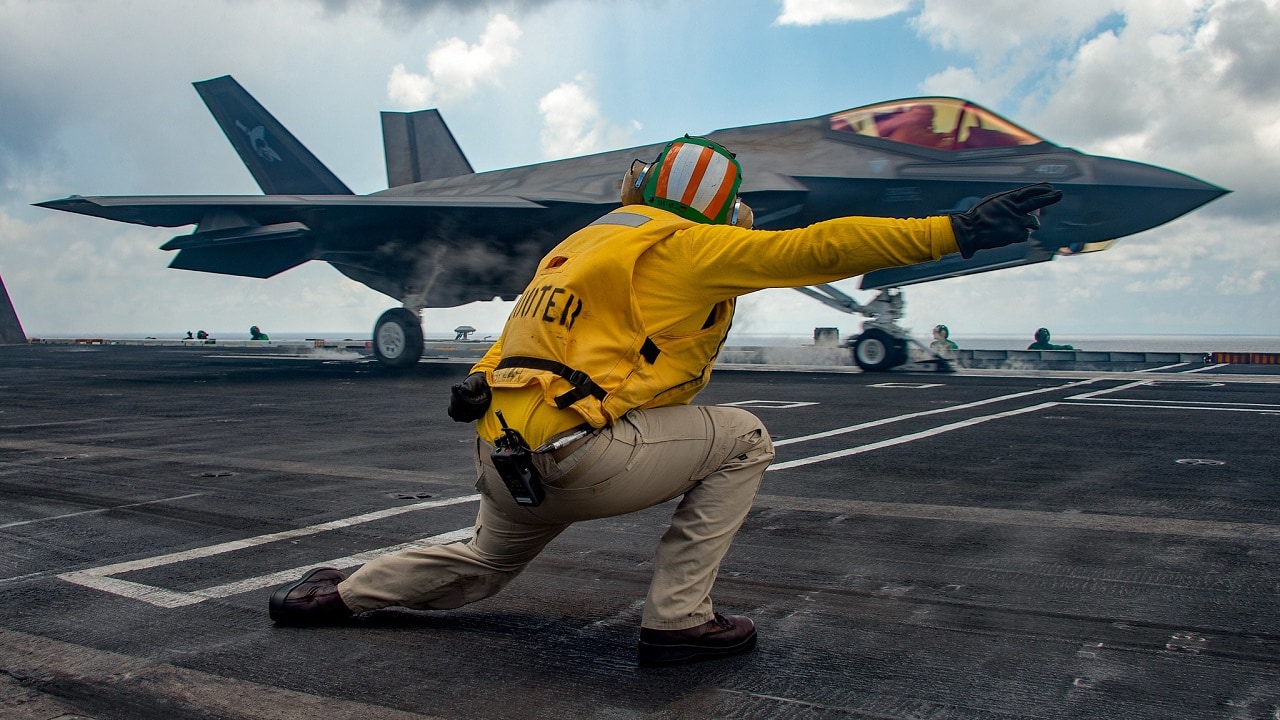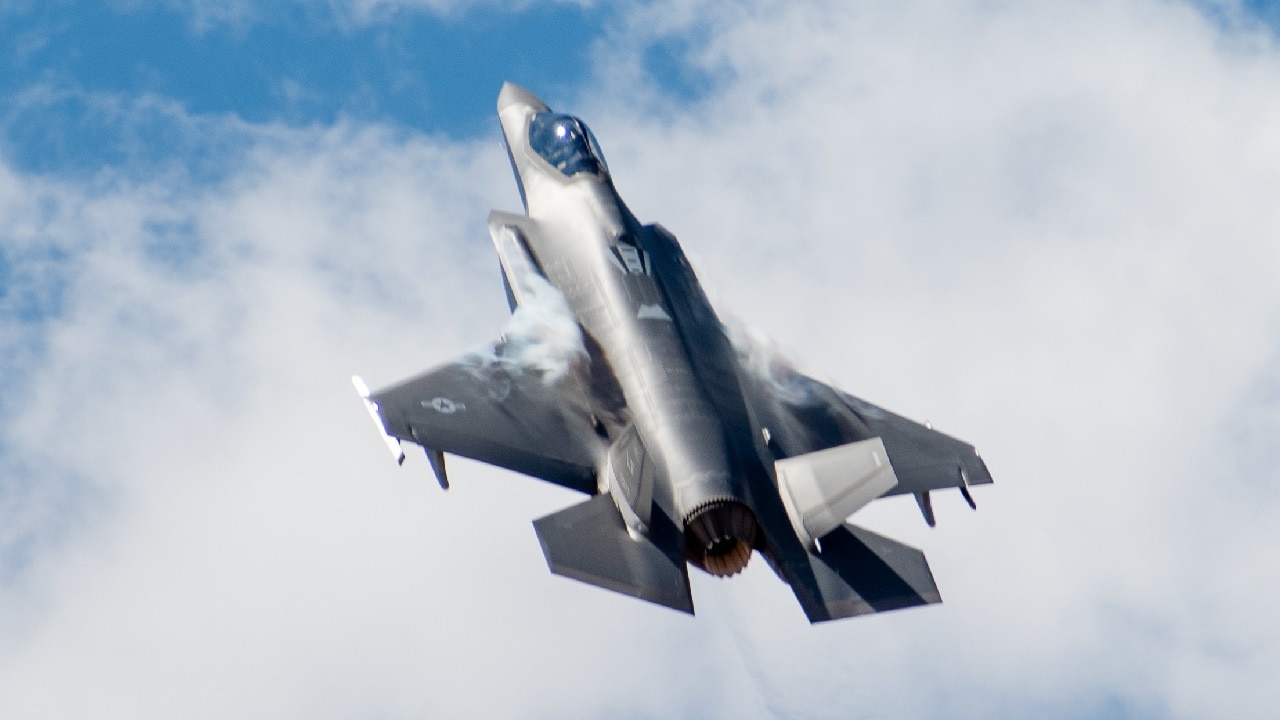Canada is on the verge of doing something that would confirm what its critics have long suspected: that it is no longer a serious country when it comes to national defense. There are credible signals out of Ottawa that the government may cancel – or at least scale back – its planned purchase of the F-35 fighter jet.
If that happens, it won’t be a strategic pivot. It won’t be a prudent reassessment. It will be a retreat – one that strips away the last illusions of Canadian military relevance in an increasingly unforgiving world.

PHILIPPINE SEA (May. 13, 2022) An F-35C Lightning II assigned to the “Black Knights” of Marine Fighter Attack Squadron (VMFA) 314 launches from the Nimitz-class aircraft carrier USS Abraham Lincoln (CVN 72). The Abraham Lincoln Carrier Strike Group is on a scheduled deployment in the U.S. 7th Fleet area of operations to enhance interoperability through alliances and partnerships while serving as a ready-response force in support of a free and open Indo-Pacific region. (U.S. Navy photo by Mass Communication Specialist 3rd Class Michael Singley) 220513-N-MM912-1002
Canada and the F-35: Let the Problems Begin
Let’s not pretend this is about cost. Or capability. Or even sovereignty. This is about political will – and Canada’s chronic lack of it when it comes to anything involving hard power.
For years, the F-35 was an easy political punching bag: over budget, behind schedule, and conveniently American. It became a litmus test for Liberals eager to signal independence from Washington and avoid making hard choices about airpower.
But now the plane is flying. It’s fully integrated into NATO and NORAD planning.
It’s being fielded by nearly every serious military in the Western alliance. And Canada, after years of half-involvement, finally committed to buying 88 of them – on paper, at least.
But that paper promise is now in danger of being torn up.
Walking away from the F-35 at this point would be more than just a procurement failure. It would be a strategic failure of the highest order. It would signal to our allies, especially the United States, that Canada is not willing to equip itself with the capabilities needed to defend its own skies – let alone contribute meaningfully to continental defense or NATO’s evolving posture. In a world of great power rivalry, where even traditionally peaceful regions are being drawn into hardened blocs and power projection contests, that kind of message is suicidal.
F-35 vs. JAS 39 Gripen in Canada
Let’s be blunt: there is no alternative that offers anything close to what the F-35 provides. Not the Swedish Gripen. Not a modernized Super Hornet. Not some mythical homegrown jet that Canada has neither the industrial base nor the strategic patience to build.
The F-35 is not just a fighter; it’s an intelligence-gathering, stealth-enabled, data-fusing node designed to operate as part of a larger, digitally integrated force. That’s exactly what Canada needs for the Arctic, for NORAD, and for the kinds of coalition operations it claims to want to support.
Those pushing for a Gripen purchase dress it up in the language of sovereignty, cost-effectiveness, and independence. But that’s fantasy. The Gripen relies on American engines, American weapons, and NATO-compatible avionics.
And now that Sweden has joined NATO, it carries no unique geopolitical benefit. What it lacks – stealth, deep-range sensor fusion, and interoperability with U.S. and allied F-35 fleets – makes it not only less capable, but strategically irrelevant in any real-world scenario Canada would face.
Nor would a pivot save money. Canada has already spent hundreds of millions keeping its place at the F-35 consortium table. It has begun adapting its infrastructure and training pipelines to the aircraft. It is set to benefit from industrial participation and long-term sustainment contracts. Scrapping the buy now would throw all that away – and saddle taxpayers with the cost of starting over, again, from scratch.
A New Era
More importantly, it would send the wrong signal at the worst possible time.
We are already in an era when Washington is reevaluating what it expects from allies. Canada has long relied on geography, goodwill, and historical ties to cushion its underperformance. That cushion is wearing thin. Our defense spending remains well below NATO’s 2% benchmark.

Beast Mode F-35 Fighter. Image Credit: Creative Commons.
Our Arctic infrastructure is inadequate. Our submarine fleet is aging into obsolescence. If we also decide not to field the one aircraft that would allow us to patrol our own skies in a networked defense environment, then what exactly are we bringing to the table?
This isn’t just about U.S. pressure, though that pressure is real. It’s about whether Canada still understands the basics of sovereignty in an age when territory, intelligence, and rapid response are again becoming central to statecraft. The F-35 allows Canada to project power credibly in its own northern frontier. It allows it to plug into U.S. and NATO systems seamlessly. It allows it to share burdens rather than offload them. Without it, Canada would become less a partner than a dependent.
F-35: Too Much Money?
Some will argue that we can’t afford the F-35. But what we really can’t afford is the illusion that sovereignty can be maintained with legacy aircraft, goodwill, and moralistic speeches. The world is shifting. Russia is modernizing its Arctic posture. China is expanding its influence into the North Pacific. The U.S. is demanding more of its allies – yes, even in this second Trump term, perhaps especially now.
That reality doesn’t require panic. But it does require seriousness. And seriousness means matching rhetoric with capability.

SOUTH CHINA SEA (Oct. 25, 2021) Lt. Nicholas Eppler, from Exeter, Calif., directs flight operations as an F-35C Lightning II assigned to the “Argonauts” of Strike Fighter Squadron (VFA) 147 launches from the Nimitz-class aircraft carrier USS Carl Vinson (CVN 70), Oct. 25, 2021. The Carl Vinson Carrier Strike Group is on a scheduled deployment in the U.S. 7th Fleet area of operations to enhance interoperability through alliances and partnerships while serving as a ready-response force in support of a free and open Indo-Pacific region. (U.S. Navy photo by Mass Communication Specialist Seaman Emily Claire Bennett) 211025-N-TY704-1241
Dumping the F-35 now would be a definitive sign that Canada is done pretending to be a credible defense partner. It would mean surrendering the future of our airpower to cheaper options that won’t deter, won’t survive, and won’t matter. It would mean turning away from the one platform that gives Canada the ability to operate in – and defend – the domains that matter most to its national interest.
And if we do walk away, the consequences won’t be abstract. They’ll be concrete. Reduced influence in Washington. Less access to the U.S. defense industrial base. Marginalization in NORAD and NATO planning. And a growing perception that Canada is little more than a territorial appendage of American defense space—unarmed, unready, and unworthy of trust.
The F-35 isn’t a panacea. But it is a signal – of seriousness, of integration, and of resolve. Abandoning it now, just as the world is growing more dangerous and unpredictable, would tell our allies – and ourselves – that we no longer believe in any of those things.
And in a decade defined not by order but by fracture, that’s not a choice Canada can afford to make.
About the Author: Dr. Andrew Latham
Andrew Latham is a non-resident fellow at Defense Priorities and a professor of international relations and political theory at Macalester College in Saint Paul, MN. Andrew is now a Contributing Editor to 19FortyFive, where he writes a daily column. You can follow him on X: @aakatham.

